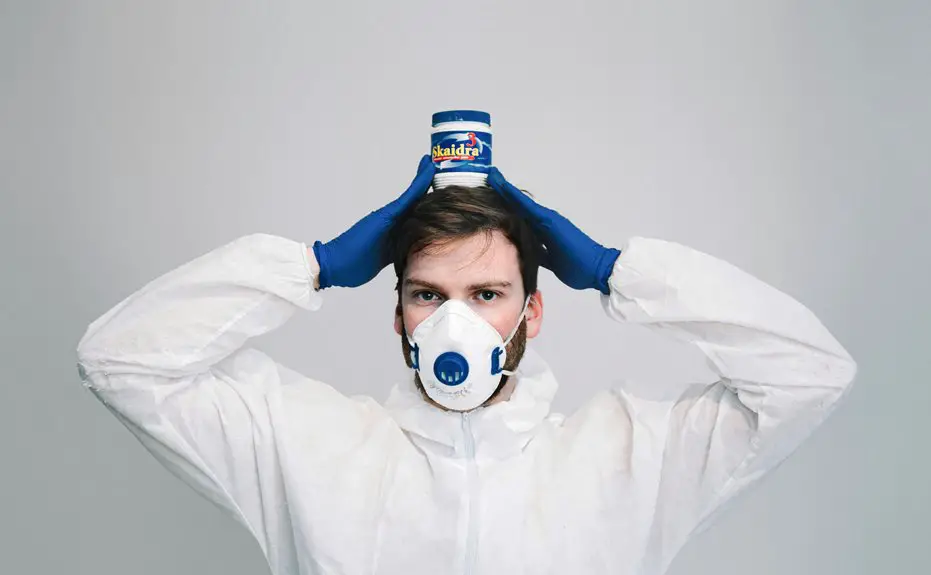To sanitize your plastic algae growing jars, start by washing them with mild detergent and hot water to remove any residues. Rinse thoroughly with tap water, then follow up with distilled water to ensure no soap remains. For disinfection, soak the jars in a 5-10% bleach-water solution for about 10 minutes, then rinse again to eliminate bleach traces. Consider using soft brushes to prevent scratches while cleaning. Regular checks and gentle cleaning will ensure your jars stay in good shape. If you're curious about further tips to enhance your algae growth, there's plenty more to uncover.
Key Takeaways
- Clean jars with mild detergent and hot water to effectively remove algae residues and organic matter.
- Disinfect jars by soaking in a 5-10% bleach-water solution, followed by thorough rinsing to eliminate bleach residues.
- Use distilled water for rinsing to ensure no soap or disinfectant residues remain, which could affect algal growth.
- Utilize soft cleaning tools, like bottle brushes, to prevent scratching and damage to plastic surfaces during cleaning.
- Regularly inspect and clean jars to maintain hygiene and prevent future algae growth by limiting nutrient availability.
Importance of Cleaning Jars
Cleaning your algae growing jars is crucial for maintaining a healthy culture. Regular cleaning prevents harmful microorganisms from building up, which can compromise the health of your cultures and lead to contamination.
Algae thrive in residues left behind, making it essential to thoroughly clean your jars to maintain optimal growth conditions. This helps prevent nutrient imbalances that could hinder your algae's progress.
To ensure your jars are ready for the next use, employ a sterilization method after cleaning. Use mild detergents and hot water to effectively remove organic matter and algae residues. This combination helps you eliminate contaminants that could interfere with your cultures.
After washing, it's important to rinse your jars with distilled water. This step gets rid of any soap residues, ensuring your jars are free from substances that might affect algal growth.
Regular maintenance also involves using UV protectors to prevent damage from sunlight and extend the lifespan of your equipment, which is vital for maintaining a healthy algae culture.
Effective Cleaning Methods
To maintain a thriving algae culture, it's essential to use effective cleaning methods for your plastic jars. Start by thoroughly cleaning the jars with mild detergent and hot water. This step is vital to remove any organic residues that could shield pathogens from sanitizing agents. After cleaning, rinse the jars with tap water, followed by distilled water to eliminate any soap residues, ensuring a clean surface for further treatment.
Next, soak the jars in a 5-10% bleach-water solution for at least 10 minutes. This disinfecting step helps eliminate viable microorganisms. After soaking, rinse the jars thoroughly to remove any bleach residues.
Use soft cloths or sponges during the cleaning and drying process to avoid scratching the plastic surface, which can harbor bacteria. Regularly inspect and clean the jars to prevent stagnant water and organic matter that may lead to algae growth and contamination. It is also crucial to apply UV protection to prevent damage from sunlight and extend the lifespan of the plastic jars.
| Step | Description |
|---|---|
| Cleaning | Use mild detergent and hot water. |
| Rinsing | Tap water followed by distilled water. |
| Disinfecting | Soak in a 5-10% bleach-water solution. |
| Rinsing Again | Thoroughly rinse to remove bleach residues. |
| Inspection | Regularly check for cleanliness and contamination. |
Disinfection and Sterilization Techniques
Regularly employing effective disinfection and sterilization techniques is crucial for maintaining the health of your algae cultures. Disinfection reduces viable microorganisms, while sterilization eliminates all of them. Choose the method based on your cleaning goals.
For disinfection, consider using:
- A 5-10% bleach-water solution to tackle stubborn pathogens.
- Alcohol for quick and effective surface disinfection.
- Hydrogen peroxide, which is also a powerful option for eliminating bacteria and fungi.
When it comes to sterilization, you have several methods at your disposal. You can use heat in a microwave for about two minutes or opt for UV light. Both methods ensure thorough microbial elimination without damaging your plastic jars.
After cleaning, always rinse your jars with distilled water to remove any residues that could interfere with future cultures.
Regular inspections and using soft cloths or sponges during cleaning will help maintain the integrity of your sterilized jars. Using plastic materials for algae growth can pose health risks due to BPA exposure and the release of microplastic particles, emphasizing the need for proper sanitation techniques.
Tools for Cleaning Plastic Jars
When it comes to maintaining your plastic algae growing jars, having the right tools can make all the difference. Start with a bottle brush, preferably one with soft bristles, to clean the interiors without scratching the plastic.
If you need a more thorough clean, consider using a high-pressure bottle washer attachment available at brewing shops. This tool is fantastic for removing stubborn algae residues.
For those tough spots, you can get creative by adding rice to the jar along with some dish soap and shaking it up. The rice acts as an abrasive, dislodging debris effectively.
Another handy tool is denture cleaning tablets. Just drop one into the jar with water, and let the fizzy action help break down algae buildup.
Don't forget to regularly inspect your cleaning tools. Make sure they're compatible with plastic materials to avoid degradation or contamination. Regular cleaning with a damp microfiber cloth and mild soap, as part of a maintenance routine, prevents grime buildup and ensures the longevity of your plastic algae growing jars.
Preventing Future Algae Growth
Cleaning your plastic algae growing jars is just the first step; preventing future algae growth requires a proactive approach. To keep those pesky algae at bay, you need to implement some effective strategies.
- Use dark or opaque containers to limit light exposure.
- Regularly change the water in your jars to reduce nutrient availability.
- Store your jars in cool, dark places to prevent warm, moist conditions.
Incorporating a small amount of vinegar into your water treatment can create an acidic environment that discourages algae growth.
Make it a habit to always check your jars for any organic residues after use. When cleaning, don't skimp on the hot water and mild detergent; this combo effectively removes residues that could promote algae proliferation.
Lastly, consider how often you change the water—weekly is a good rule of thumb.
Using recycled materials in your jars can also help minimize the introduction of new nutrients that may contribute to algae growth.
Frequently Asked Questions
Does Boiling Water Sanitize Plastic?
Boiling water doesn't effectively sanitize plastic. It can warp or damage many plastics, potentially leaving residues or biofilms. Instead, use a bleach-water solution or appropriate disinfectants for better results and always rinse thoroughly afterward.
How Do You Clean and Sterilize Jars?
To clean and sterilize jars, start by washing them with warm, soapy water. Rinse thoroughly, soak in a bleach solution, rinse again, and let them dry completely to ensure they're ready for future use.
How Are Plastic Bottles Sterilized?
To sterilize plastic bottles, wash them with mild detergent and hot water, then rinse. Alternatively, soak them in a bleach-water solution for 10 minutes, or use hydrogen peroxide or isopropyl alcohol for effective sanitization.
How Do You Sanitize Cosmetic Jars?
To sanitize cosmetic jars, you'll want to clean them with warm, soapy water, rinse thoroughly, and soak in a bleach solution for ten minutes. Rinse again with distilled water and let them dry completely.

